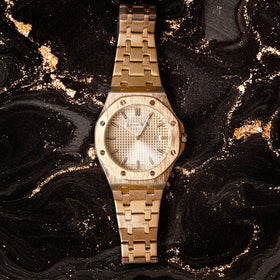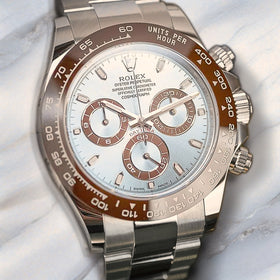When it comes to protecting your watch from moisture, there are several important elements to consider. The gaskets or seals made of Teflon, rubber, or nylon, which create a waterproof barrier where the crystal, case back, and movement come together, are critical. Additionally, chronograph watches may also have gaskets on their pusher screws.
Water-resistant watch cases are often treated with a special sealant that helps prevent water from entering the watch. The material and thickness of the watch case are also important factors to consider when evaluating a watch's water resistance. Manufacturers recommend that cases be made of either titanium, steel, or steel coated with gold. In general, sturdy gold cases can be moisture-resistant if they are large enough to resist tension.
Screws in the case back and the movement are also instrumental in the water resistance of watches. A screw-in case back, as opposed to a push-in, creates a water-resistant barrier that acts like a seal between a jar and its lid. Similarly, a screw-in movement, which is found on many watches worn by divers, helps keep water out of the watch-case through the stem hole.
Determining Water Resistance
Water resistance is typically measured in meters and refers to the depth at which water won't enter the watch as long as both the watch and the wearer are stationary. In real-world situations, the motion of the wearer's arm through the water can significantly increase the pressure on the watch. As a result, watches can only be worn at depths determined by laboratory testing machines.
Recommended Usage
Most watch manufacturers offer usage recommendations based on the water resistance of their watches. These guidelines typically include:
- Splash resistant: Not suitable for any water-based activities.
- Water-resistant to 30 meters (100 feet): Suitable for water splashes or rain, but not recommended for swimming or diving.
- Water-resistant to 50 meters (165 feet): Suitable for swimming in shallow water or engaging in light water activities.
- Water-resistant to 100 meters (330 feet): Suitable for snorkeling and swimming.
- Water-resistant to 150 meters (500 feet): Recommended for snorkeling.
- Water-resistant to 200 meters (660 feet): Suitable for diving.
- Diver's 150 meters (500 feet): Complies with ISO standards and recommended for scuba diving.
- Diver's 200 meters (660 feet): Complies with ISO standards and suitable for scuba diving.
Please note that we do not recommend diving or swimming with your watch.
Handling Waterproof Watches
To keep your watertight watch functioning properly, avoid wearing it while taking hot showers, baths, or saunas. The heat can cause metal parts to expand at a different rate than the rubber gaskets, resulting in tiny cracks that allow water to enter the watch. Abrupt temperature changes can also be problematic, so avoid jumping into a cold pool after wearing your watch in a hot sauna.
If you wear your watch while diving or swimming in saltwater, be sure to rinse it with fresh water afterwards. If your watch has a rotating bezel, spin it several times while rinsing it to prevent salt buildup and corrosion.
Some chemicals, such as those found in chlorinated water or hairsprays and perfumes, can corrode gaskets and damage your watch. Leather watch bands are also susceptible to damage from repeated exposure to water, so consider purchasing a watch with a metal strap or a nylon or rubber diver bracelet if you frequently engage in water-based activities.



